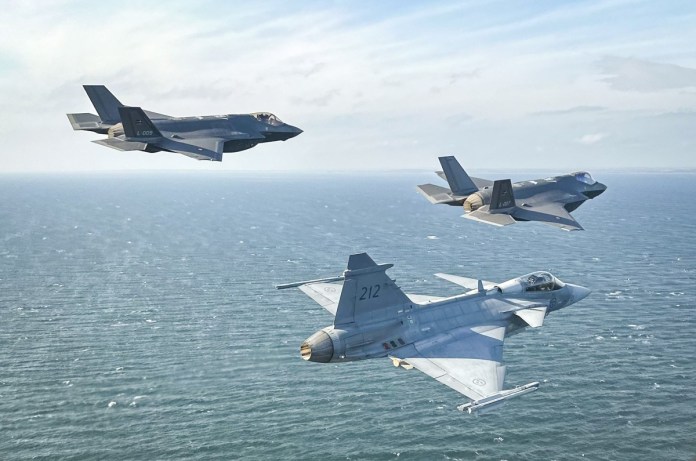In an unusual encounter, Saab Gripen fighter jets engaged in simulated aerial combat, or "dogfights," with F-35 stealth jets to prepare for potential confrontations with Russian Su-35 and Su-30 fighters. This joint exercise between Swedish JAS-39 Gripen and Danish F-35 aircraft showcased the advanced capabilities of Western fighter aircraft in countering Russian Aerospace Forces.
The Gripen-E, known as a force multiplier for NATO's air fleet, presents a significant threat to Russian fighters, despite its lack of stealth. Equipped with advanced technology such as Gallium Nitride (GaN) Active Electronically Scanned Array (AESA) radar and infrared search and track (IRST) systems, the Gripen-E can effectively engage Russian aircraft while remaining agile and versatile.
The collaboration between Gripen and F-35 aircraft signifies mutual cooperation between neighboring countries, aimed at enhancing joint fighting capabilities. By combining the F-35's data processing capabilities with the Gripen's mass-production advantage, a potent "radar and missile truck teaming" tactic is proposed, allowing Gripen to release missiles at targets identified by the F-35 while leveraging its stealth capabilities.
Russia's weaknesses in Airborne Warning and Control Systems (AWACS) further exacerbate the advantage of Western aircraft. With plans underway to revitalize defense industries in Europe and the US, including the development of advanced missiles like the AIM-260 Joint Advanced Tactical Missile (JATM), Western forces are gearing up to counter the threat posed by Russian fighters effectively.
Through strategic collaborations and technological advancements, Western air forces are preparing to confront Russian fighters with confidence and efficiency.

:quality(70)/cloudfront-us-east-1.images.arcpublishing.com/archetype/UONH356ARBDD7PJM5TOLBZ3CJ4.jpg)
:quality(70)/cloudfront-us-east-1.images.arcpublishing.com/archetype/ELWPCXX4CJAMXNTCAFZ57ARWJI.jpg)
:quality(70)/cloudfront-us-east-1.images.arcpublishing.com/archetype/C3KZ2VHMQJH3BABQPT6XUUT2XM.jpg)